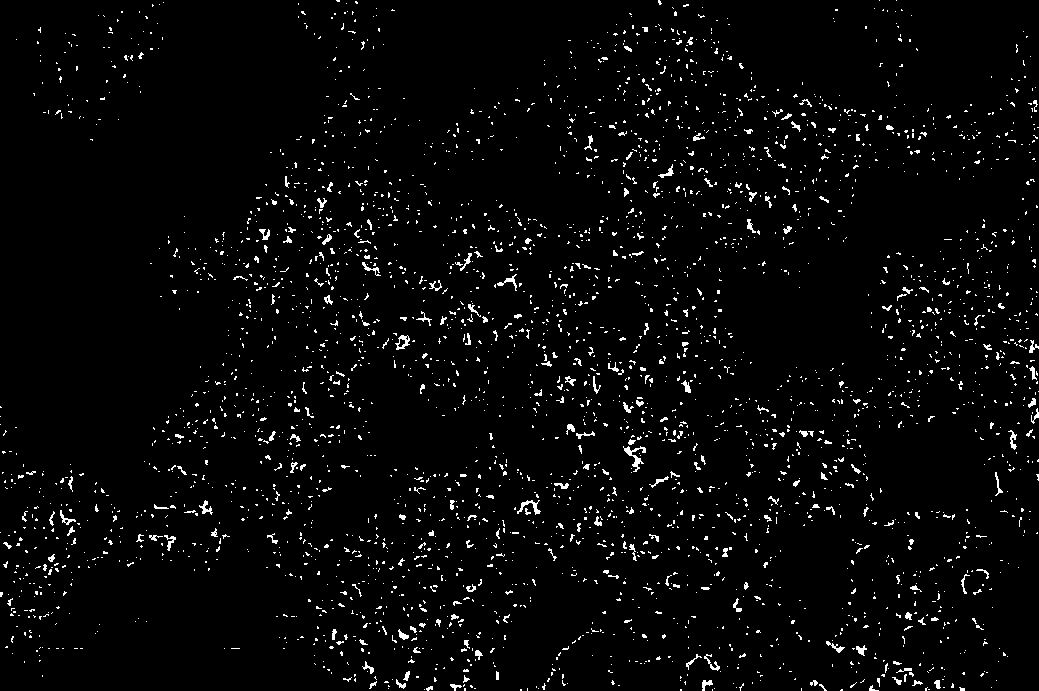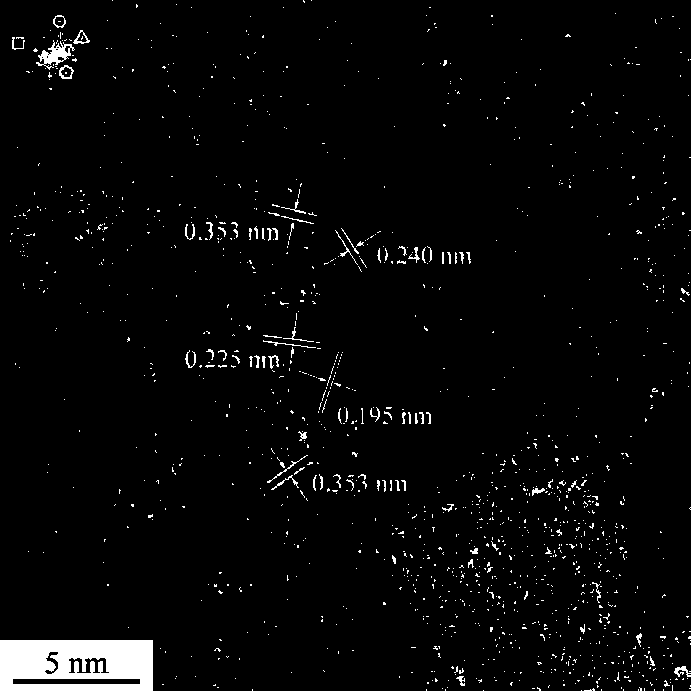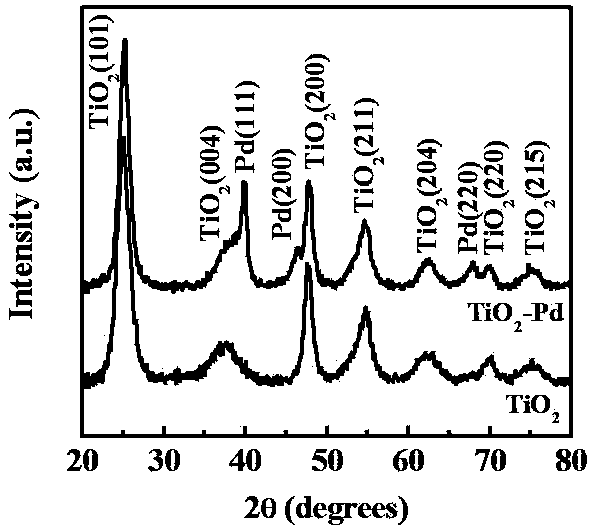In situ synthesis method for palladium-loaded titanium dioxide base nanometer heterojunction material
A titanium dioxide, in-situ synthesis technology, applied in chemical instruments and methods, metal/metal oxide/metal hydroxide catalysts, chemical/physical processes, etc., can solve the lack of visible light-responsive catalytic materials, photo-generated electrons and holes recombination high photocatalytic activity and stability, low cost, and enhanced visible light absorption
- Summary
- Abstract
- Description
- Claims
- Application Information
AI Technical Summary
Problems solved by technology
Method used
Image
Examples
Embodiment Construction
[0020] A method for in-situ synthesis of palladium-loaded titania-based nano-heterojunction materials, comprising the following steps:
[0021] (1) Preparation of blue titanium dioxide:
[0022] Add white titanium dioxide (anatase phase or rutile phase or a mixture of both) and 10%~37% formaldehyde solution into the quartz photocatalytic reactor, ultrasonically disperse, the ratio of titanium dioxide to formaldehyde solution is 0.08~80g / L (that is, titanium dioxide The concentration in the formaldehyde solution is 0.08~80g / L), 250~400W high-pressure mercury lamp or xenon lamp ultraviolet light for 8~30min, the blue titanium dioxide is prepared; the solid is obtained by centrifugation, washed with water and ethanol;
[0023] (2) In situ synthesis of palladium-supported titania-based nano-heterojunction materials
[0024] Add 2~25mmol / L PdCl to the blue titanium dioxide prepared by the above method 2 solution, ultrasonic dispersion, titanium dioxide and PdCl 2 The molar ratio...
PUM
 Login to View More
Login to View More Abstract
Description
Claims
Application Information
 Login to View More
Login to View More - R&D
- Intellectual Property
- Life Sciences
- Materials
- Tech Scout
- Unparalleled Data Quality
- Higher Quality Content
- 60% Fewer Hallucinations
Browse by: Latest US Patents, China's latest patents, Technical Efficacy Thesaurus, Application Domain, Technology Topic, Popular Technical Reports.
© 2025 PatSnap. All rights reserved.Legal|Privacy policy|Modern Slavery Act Transparency Statement|Sitemap|About US| Contact US: help@patsnap.com



